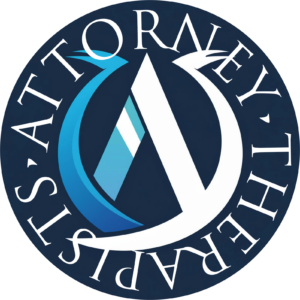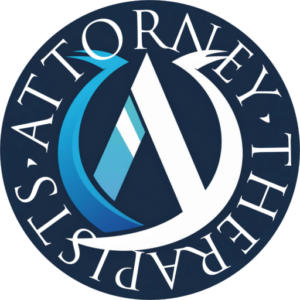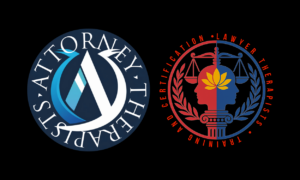The contemporary legal profession finds itself at a pivotal juncture. Once regarded as the most insulated of professional guilds, law has now become an arena in which artificial intelligence (“AI”) is rapidly displacing traditional pathways of professional development. In particular, the encroachment of AI on routine tasks—document review, legal research, and even basic drafting—has had an outsized impact on the professional identity of junior associates. For decades, these tasks were the rites of passage through which neophyte attorneys honed technical skills, developed fluency in legal language, and proved their value within hierarchical firms. Now, as these foundational experiences are increasingly automated, the psychological strain on young lawyers has grown acute.
This Article examines the stress experienced by junior associates in the wake of AI integration into the legal workplace. It situates this phenomenon within recent developments at major law firms, draws on anecdotal reports of shifting expectations, and then offers a therapeutic framework for helping attorneys adapt. Such adaptation requires more than mere technical proficiency; it demands a reorientation of mindset, a willingness to let go of conditioned modes of performance, and the cultivation of curiosity and creativity as core professional skills.
I. The Encroachment of AI in the Legal Workplace
A. The Rise of AI in Research and Drafting
Over the last five years, AI has moved from being a speculative experiment to a mainstay in elite law firms. Large Language Models (“LLMs”) such as GPT-4 and subsequent iterations are now routinely deployed for contract analysis, case law synthesis, and even drafting first-pass memoranda. Platforms including Casetext’s “CoCounsel,” Harvey AI, and Lexis+ AI promise to perform in seconds what once required hours of associate labor.
B. Anecdotal Evidence from Major Firms
Several recent reports underscore this trend.
-
In 2024, Baker McKenzie publicly announced pilot programs integrating AI for due diligence in cross-border mergers, a task previously delegated to teams of junior associates and paralegals.
-
Allen & Overy, one of the U.K.’s “Magic Circle” firms, introduced Harvey AI into its global practice, highlighting how junior associates were no longer expected to perform “first-line” research on routine matters.
-
At Debevoise & Plimpton, internal surveys revealed that associates worried about diminished billable opportunities as AI systems took over large portions of document review in securities litigation.
The anecdotes share a common theme: work historically assigned to the most junior tier of legal professionals is being rapidly restructured, sometimes with little guidance on how associates should now demonstrate their value.
C. Psychological Consequences
The consequences are not merely economic. Junior associates often describe feeling dispossessed of their training ground. Tasks once viewed as foundational—“learning by doing” through exhaustive research or drafting multiple iterations of briefs—are now handled by algorithms. Associates report anxiety about obsolescence, diminished professional identity, and uncertainty about career trajectories. The stress is exacerbated by the competitive culture of large law firms, where self-worth is frequently tied to demonstrable productivity.
II. The Need for a Therapeutic Framework
A. The Limits of Traditional Coping Mechanisms
Historically, junior associates coped with stress by adopting the same perfectionistic strategies that propelled them through law school: over-preparation, late nights, and intellectual overcontrol. These strategies, however, are maladaptive in an environment where the very tasks that once rewarded such behavior are outsourced to machines. Attempting to cling to “old ways” of proving value intensifies frustration and anxiety, leaving associates in a state of perpetual dissonance.
B. Toward an Adaptive Mindset
Therapeutic interventions must instead help junior associates pivot toward flexibility. The goal is not to resist AI, but to embrace it as a tool that can expand their professional range. Several principles drawn from psychotherapy provide guidance.
III. Therapeutic Approaches for Embracing Technological Change
A. Letting Go of Conditioned Work Identities
Cognitive-behavioral frameworks emphasize the importance of identifying and challenging core beliefs. For junior attorneys, one such belief is that professional legitimacy derives from hours spent grinding through research and drafting. Therapy can help attorneys reframe these beliefs, recognizing that competence is now demonstrated not by raw output, but by judgment, strategy, and creativity layered atop AI assistance.
B. Cultivating Curiosity Over Control
Mindfulness-based approaches encourage a stance of curiosity rather than control. When associates approach AI outputs not as threats, but as prompts for deeper analysis, they unlock a more dynamic relationship with technology. Instead of fearing obsolescence, they can ask: What can I build from this? How can I refine, contextualize, or challenge the machine’s first draft? This shift transforms anxiety into engagement.
C. Channeling Creativity as a Professional Asset
Therapeutic work may also emphasize creativity as an antidote to rigidity. As AI absorbs rote tasks, the comparative advantage of the human lawyer lies in imaginative application of law to complex human contexts. Encouraging associates to view AI-generated drafts as raw material—akin to clay awaiting sculpting—helps restore a sense of authorship and purpose.
D. Preparing for Future Transitions
Finally, therapy should cultivate resilience to future disruptions. The lesson of AI is not merely that a new tool has emerged, but that change itself is the constant. By learning to embrace impermanence—an insight drawn from both existential and mindfulness traditions—junior associates can inoculate themselves against the paralyzing fear of future upheavals.
Conclusion
The encroachment of AI into the traditional work of junior associates is both a disruption and an opportunity. It challenges entrenched hierarchies of professional development, yet simultaneously opens space for attorneys to exercise judgment, creativity, and adaptability at earlier stages of their careers. The stress now palpable in law firm hallways is real and profound, but it need not be destructive. With therapeutic approaches that emphasize letting go of conditioned identities, cultivating curiosity, and embracing creativity, the next generation of attorneys can forge not only more sustainable careers, but also a healthier profession—one better suited to navigate the uncertainties of a rapidly changing world.









